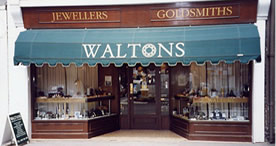GOLD
Gold exists almost everywhere, in the sea and in rivers, as well as in the earth.
However, while tiny traces of gold are almost everywhere, gold is still extremely rare. There is so little of it, that all the gold mined since the beginning of time could be transported by one modern oil tanker, and there is probably only half as much again left in the earth to be mined.
It is a very heavy metal but unlike all others, it is almost impossible to destroy and it will never rust, decay, corrode or oxidise. Because of this it is frequently used in science, medicine and industry to help improve the quality of life.
Because gold is naturally a soft malleable metal, it must be alloyed with other elements to strengthen it in order to make jewellery. The ‘carat’ will tell you how much pure gold your jewellery contains.
The word ‘carat’ comes from the Arabic word meaning ‘bean seed’, because years ago seeds were used to measure the weight of gold and precious stones. Nowadays, the carat literally means the amount of gold an item of jewellery contains.
For example, pure gold is 24 carat or 99.9% pure. This would be far too soft for most jewellery and so an alloy is added. If a piece of jewellery is marked 9 carat gold, then it means it consists of 9 parts gold to 15 parts other alloys. The higher the carat the greater the proportion of gold it will contain.
The additional alloys to gold can also change its colour, like mixing paints. To make red gold, copper is added. This was very popular in Victorian times. If silver, zinc or palladium is added, white gold is created. This is mainly used for settings and decoration. However, it is never a pure white colour because of the yellow gold content. To overcome this, almost all finished articles receive a thin coating of rhodium plating to achieve a truly white effect.
Interesting fact:
A piece of pure gold the size of a matchbox can be flattened to area the size of a tennis court!


